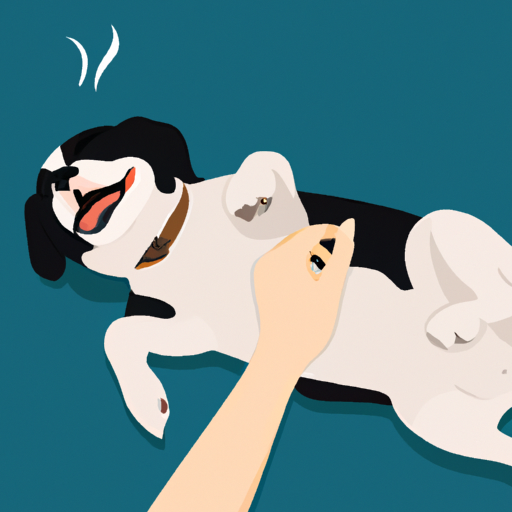As a caregiver to our furry friends, understanding their preferences can make a world of difference in your relationship. There’s a certain art to scratching a dog, and knowing where to focus your attention can turn a mundane petting session into a blissful experience for your canine companion.
The Joy of Scratching
Every dog owner is familiar with the sight of their pet wriggling in delight when they hit the “sweet spot”. But why do dogs like to be scratched? The answer lies in their skin structure. A dog’s skin is thick and rich in nerve endings, making it extremely sensitive to touch. When you scratch your dog, it stimulates these nerve endings, producing feelings of pleasure and relaxation.
You can think of scratching as a massage for your dog. Just as we humans enjoy a good back rub, dogs too find the sensation of being scratched immensely satisfying. It’s a simple, yet effective way to bond with your dog and make them feel loved and cared for.
The Top Five Scratch Zones
So, where do dogs like to be scratched the most? While each dog is unique, there are some common “scratch zones” that most dogs seem to enjoy.
-
The Base of the Tail: This spot is a dog’s equivalent of a human’s lower back. The skin here is thick and full of nerve endings, making it highly sensitive to touch.
-
Behind the Ears: This area is a close second favorite for many dogs. It’s a sensitive spot that they can’t easily reach themselves, so they appreciate when you do the work for them.
-
The Chest: Scratching or rubbing a dog’s chest can be calming and comforting for them, especially if they’re feeling anxious.
-
Under the Chin: Many dogs love a good chin scratch. It’s a vulnerable area, so if your dog lets you scratch here, it’s a sign of trust.
-
The Belly: Belly rubs are a classic for a reason. Most dogs love them, and they’re a great way to make your dog feel relaxed and loved.
The Art of the Scratch
But how can you make sure that your dog is getting the most out of your scratching sessions? Here are a few tips:
-
Watch your dog’s reactions. If your dog seems to be enjoying the scratch, keep going. If they pull away or seem uncomfortable, try a different spot.
-
Vary the pressure. Some dogs prefer a gentle scratch, while others enjoy a deeper rub. Start softly and gradually increase the pressure to see what your dog prefers.
-
Use both hands. Using both hands to scratch your dog can increase the pleasurable sensations and make the experience more enjoyable for them.
The Scratch Table
To make things simpler for you, here’s a table summarizing the top scratch spots and their characteristics:
| Scratch Zone | Characteristics |
|---|---|
| Base of the Tail | Thick skin, rich in nerve endings |
| Behind the Ears | Hard for dogs to reach, sensitive |
| Chest | Calming and comforting |
| Under the Chin | Sign of trust |
| Belly | Classic favorite, relaxing |
Frequently Asked Questions
Q: What if my dog doesn’t like to be scratched in any of these spots?
A: Each dog is unique. If your dog doesn’t seem to enjoy these spots, pay attention to their reactions and try to find other areas they might like.
Q: Can I scratch my dog too much?
A: Yes, excessive scratching can irritate your dog’s skin. It’s always important to watch for any signs of discomfort.
Q: Are there any health benefits to scratching my dog?
A: Besides the obvious bonding and relaxation effects, regular scratching can help you spot any abnormalities in your dog’s skin, like lumps, ticks, or skin issues.
Remember, scratching is more than just a way to pamper your dog—it’s an opportunity to strengthen your bond with your canine companion and make them feel loved and cared for. Happy scratching!



